 Click HERE to return to the contents page
Click HERE to return to the contents page
 Click HERE to return to the contents page
Click HERE to return to the contents page
Mercedes-Benz: pioneer of the digital transformation
Digital transformation at Mercedes-Benz: from car manufacturer to networked mobility service provider.

 Translation from English to Urdu
Translation from English to Urdu
Original Link
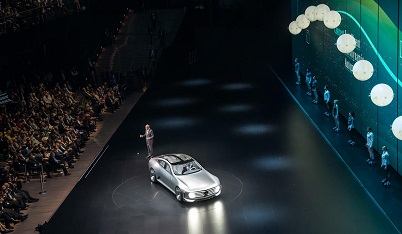
The inventor of the automobile pushes the change.
The automotive industry is changing fundamentally, things are speeding up. Alongside “globalisation”, another megatrend is “digitalisation” – also known in an economic context as “Industry 4.0”. Mercedes-Benz is a pioneer in this development. The inventor of the automobile is actively driving forward the transition from automotive manufacturer to networked mobility service provider. Dr. Dieter Zetsche, Chairman of the Board of Management of Daimler AG and Head of Mercedes Benz Cars, explained the strategy and the current status of development on the eve of the IAA 2015.
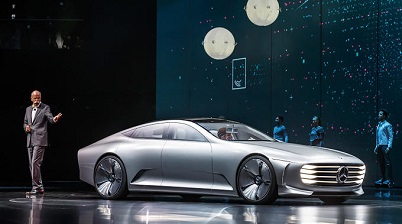
Presenting the “Concept Intelligent Aerodynamic Automobile”, known for short as “Concept IAA”, Zetsche showed a concrete example of the fascinating opportunities offered by digital product development.
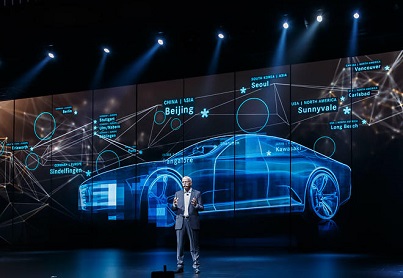
Digitalisation is an essential aspect.
Digitalisation has been a central strategic issue in all areas of Mercedes-Benz for many years. Technical innovations like driveline electrification and autonomous driving, in particular, would be unthinkable without the digital transformation. The same applies to production, where the brand with the three-pointed star likewise plays a leading role. In parallel, the progress of digitalisation in the area of marketing and sales means Mercedes-Benz is taking into account altered customer expectations and the associated transformation in communication patterns and behaviour.
Focus on customers and employees.
“It’s about nothing more and nothing less than the complete networking of the entire value chain – from research and development, through production to marketing and sales,” said Zetsche, speaking on the eve of the show.
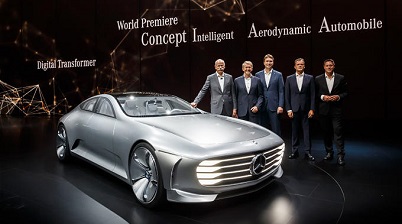
“This digital transformation is in full swing at Mercedes-Benz. We are transitioning from car manufacturer to networked mobility service provider, whereby the focus is always on the individual – as customer and employee. This is how we will continue to develop the company and thereby ensure our future competitiveness.”
More speed, more precision, more diversity.
Digitalisation at Mercedes-Benz is particularly advanced in the area of research and development. By way of comparison, computer renderings with around one thousand elements were possible in the 1970s. One decade later, this had risen to 25 times as many. Today, the figure stands at up to 80 million elements and rising. Digital prototyping accelerates the development of new generations of cars – but more than that, it also raises their quality and offers opportunities for increased diversity. The car of the future is being simulated and optimised as a digital prototype from the earliest stages of its development.
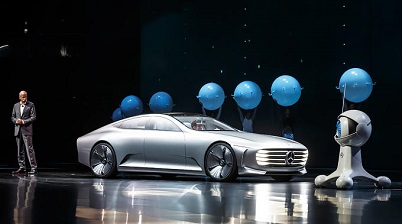
“With the aid of digital prototypes, we are also improving the passive safety of our vehicles – faster, more precisely and more efficiently than ever before,” said Prof. Dr. Thomas Weber, Member of the Board of Management of Daimler AG responsible for Group Research and Mercedes-Benz Cars Development.
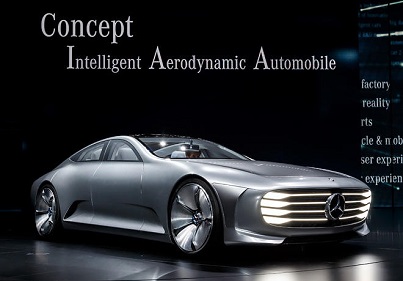
Ingenious aerodynamics.
More efficient production.
Another particularly impressive example is aerodynamics. “The key term here is Big Data, the evaluation of large quantities of data from a wide range of sources,” continued Weber. “Before we let a new car anywhere near our wind tunnel, it has already successfully passed a barrage of digital tests as a complete data model.” The opportunities and potential this unlocks for production development are not difficult to imagine. One example is that current Mercedes-Benz production cars are already aerodynamic world champions in virtually all classes. The opportunities presented by digitalisation are already being used to the maximum by the Formula One Team. From add-on parts such as aerodynamic features, through to new engine and drive components, the route from computer data model to race track is often impressively short and fast. Production, too, is becoming more flexible and efficient thanks to digitalisation. The aim is intelligent production, notable for its transformability, resource efficiency and better ergonomics for workers.
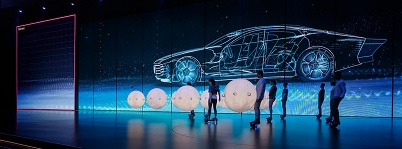
However, the digital revolution does not end when a vehicle leaves the production line. Mercedes-Benz is also using the opportunities presented by digitalisation in marketing and sales. Online stores are enhancing existing sales outlets and making it possible to order or lease a vehicle at any time. Greater focus is being placed on digital interaction in the real world, too.
The Mercedes me stores are equipped with a wide array of digital design elements. Prospects can configure exactly the car they want easily and conveniently at multi-touch monitors and plasma screens. In addition, more than half a million people are interacting with Mercedes-Benz every day via the brand’s global social media platforms – more than with any other car maker.
Mercedes me: a personalised brand world.
The easiest access to the personalised brand world is offered by the Mercedes me online portal, where Mercedes-Benz is accessible at any time. The spectrum ranges from electronic appointment booking for classic customer service, through individual networking with a customer’s own vehicle to the offer of personally configured financial services. Customers can also find products that are not restricted to their own car. This includes mobility services like car2go and information on lifestyle activities and entertainment offerings. Mercedes me was launched one year ago, enabling customers across Europe to connect with their vehicles anywhere, any time.
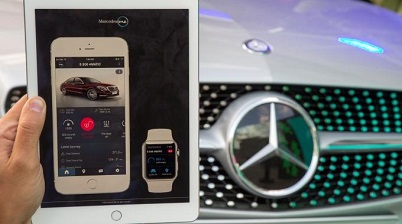
Mercedes me innovations include the new Lifestyle Configurator, which enhances the classic vehicle configurator. The customer can use it to enter their individual preferences in furnishings, travel destinations or sporting disciplines and, on the basis of their selections, a vehicle is suggested that would be the best match for them.
Vehicle communication and data protection.
The rapid development of communications technology is still opening up completely new perspectives. Experts assume, for instance, that a 5G mobile communications network will be up to 100 times faster than LTE. Comprehensive updates to the car’s software, for instance, can then also be handled online in just a matter of seconds. Due to this in particular, data protection is especially important to the company.

According to Dieter Zetsche: “The opportunities are enormous; as is our responsibility to protect our customers’ private lives and to ensure that personal information does not fall into the hands of third parties. This responsibility also means our vehicles must be secure against manipulation from outside. It is therefore our duty and our aim to make our cars as secure as possible. We are working incredibly hard on this.”
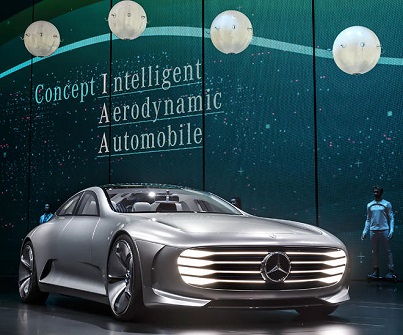
The digital transformer: “Concept IAA”.
At the Frankfurt International Motor Show, Mercedes-Benz is showing what digitalisation can mean for the car as a product in real terms, with the “Concept IAA” (Concept Intelligent Aerodynamic Automobile). The increase in speed and efficiency through digitalisation is impressively demonstrated in figures. Design development, which alone would previously have taken up to two years, was achieved in less than eleven months. The Mercedes-Benz “Concept IAA” is two cars in one – an aerodynamic world record holder with a Cd figure of 0.19 and a four-door coupé with a fascinating design. The study, which will be premiered at the IAA in Frankfurt, automatically switches from Design mode into Aerodynamic mode at speeds above 80 km/h, altering its form with a large number of active aerodynamic measures.